I'm making a 2D game on replit and so far, I'm doing pretty well. My last question is about making the map.
Here's the code for the map:
import pygame, sys
BLUE = (0, 0, 255)
SAND = (194, 176, 128)
GRASS = (124, 252, 0)
FOREST = (0, 100, 0)
TileColor = {'W': BLUE, 'S': SAND, 'G': GRASS, 'F': FOREST}
map1 = ["WWWWWWWWWWWWWWWWWWWWWWW",
"WWWWWWWWWGGGWWWWWWWWWWW",
"WWWWWGGGGGGGGGGGWWWWWWW",
"WWWWGGGGGFFFGGGGGGWWWWW",
"WWWGGGGGFFFFFFGGGGGWWWW",
"WWWGGGGGGFFFFFGGGGGGWWW",
"WWGGGGGGGGGFFGGGGGGGWWW",
"WWGGGGGGGGGGGGGGGGGGGWW",
"WWGGGGGGSSSSSSSGGGGGGGW",
"WWGGGGSSSSSSSSSSGGGGGGW",
"WGGGGGGGSSGGGGGGGGGGGSW",
"WGGGGGGGGGGGGGGGGGGGSSW",
"WSGGGGGGGGFFGGGGGGGGSSW",
"WSSGGGGGGFFFGGGGGFFGGSW",
"WSSGGGGGFFFFFFGGFFFFFGW",
"WSGGGGFFFFFFFFFFFFFFGGW",
"WWGGGGGFFFFFFFFFFFFGGWW",
"WWGGGGGGGFFFFFFFFGGGWWW",
"WWWWGGGGGGGGFFGGGGGWWWW",
"WWWWWWSSSSSGGGGSSSWWWWW",
"WWWWWWWWWSSSSSSSSWWWWWW",
"WWWWWWWWWWWWWWSWWWWWWWW",
"WWWWWWWWWWWWWWWWWWWWWWW"
]
TILESIZE = 22
MAPWIDTH = 23
MAPHEIGHT = 23
pygame.init()
DISPLAY = pygame.display.set_mode((MAPWIDTH * TILESIZE, MAPHEIGHT * TILESIZE))
while True:
for event in pygame.event.get():
if event.type == pygame.QUIT:
pygame.quit()
sys.exit()
for row in range(MAPHEIGHT):
for col in range(MAPWIDTH):
pygame.draw.rect(
DISPLAY, TileColor[map1[row][col]],
(col * TILESIZE, row * TILESIZE, TILESIZE, TILESIZE))
pygame.display.update()
Which got me this:
Now I want to make a little person moving around when I press the arrow keys, and then I want to make it not be able to move onto to blue (water). Any suggestions on how I could do that?

